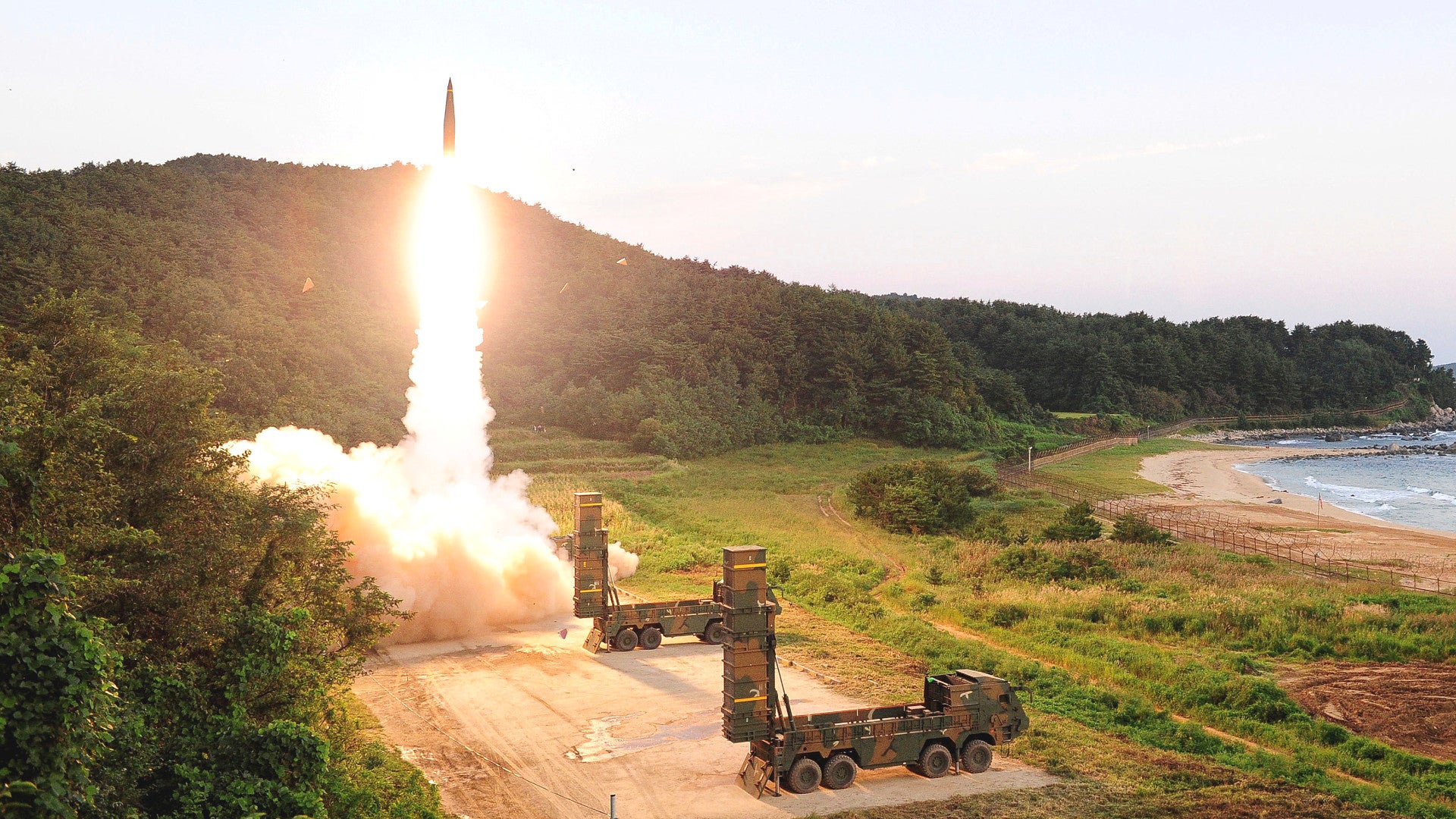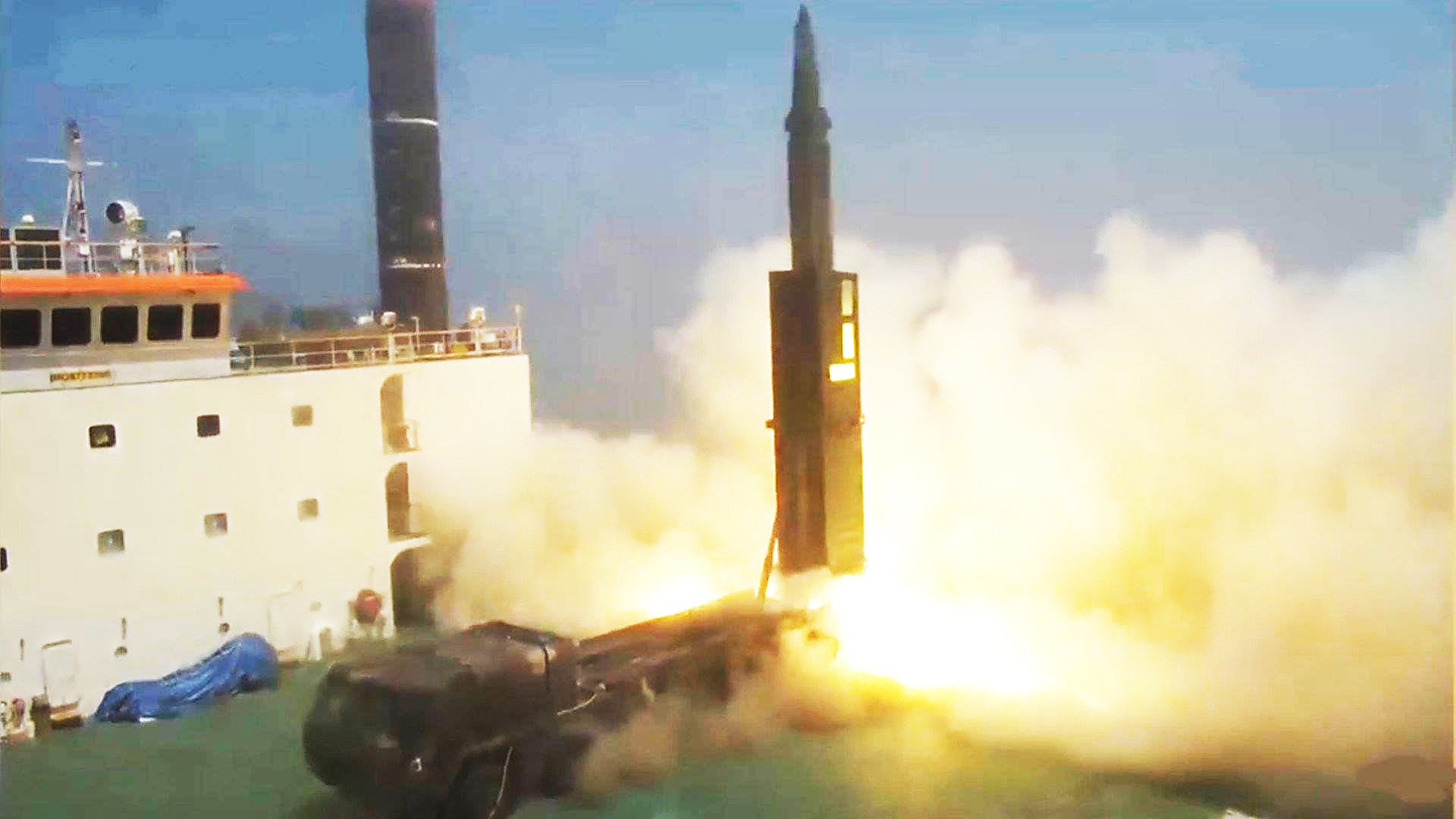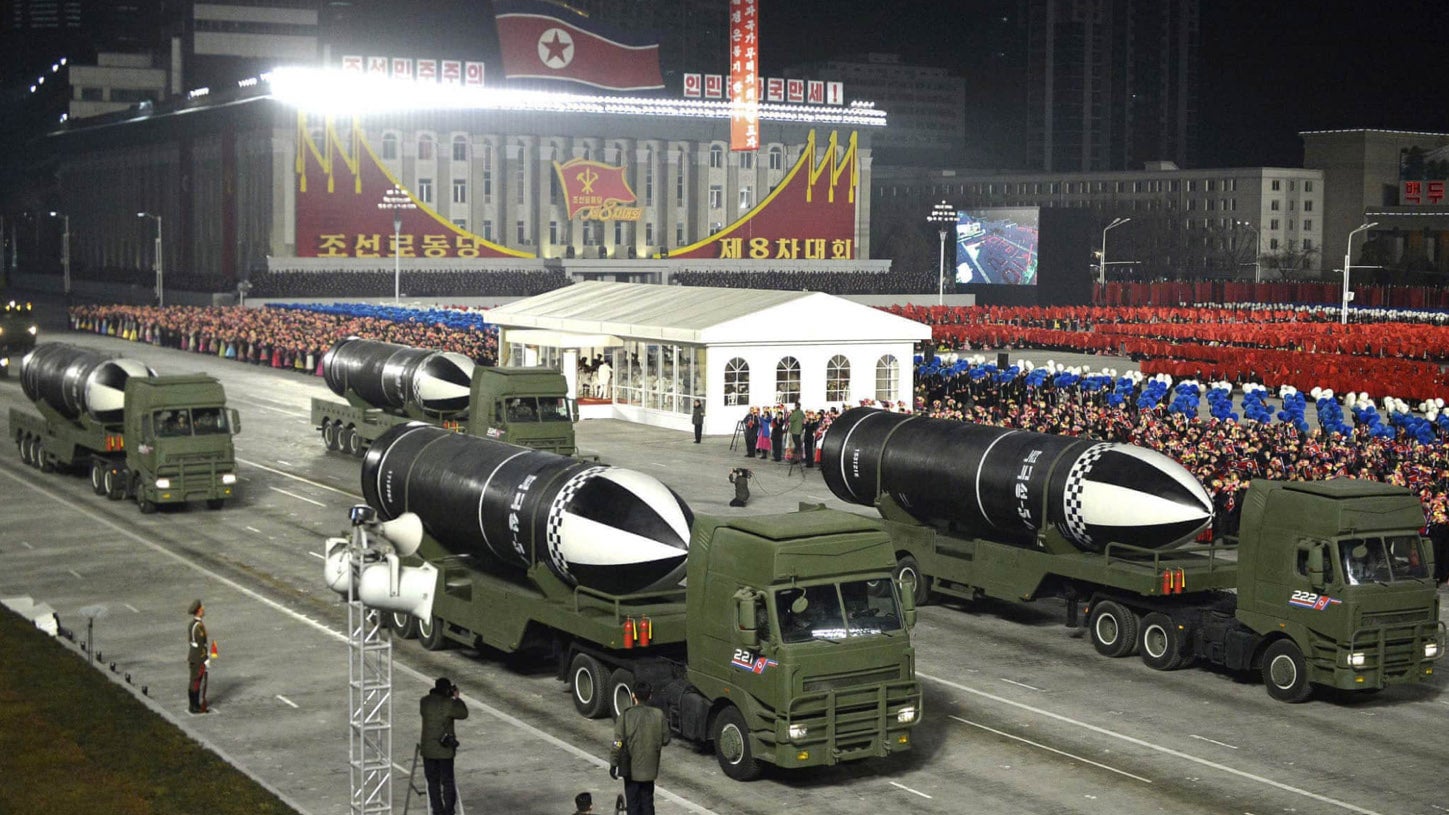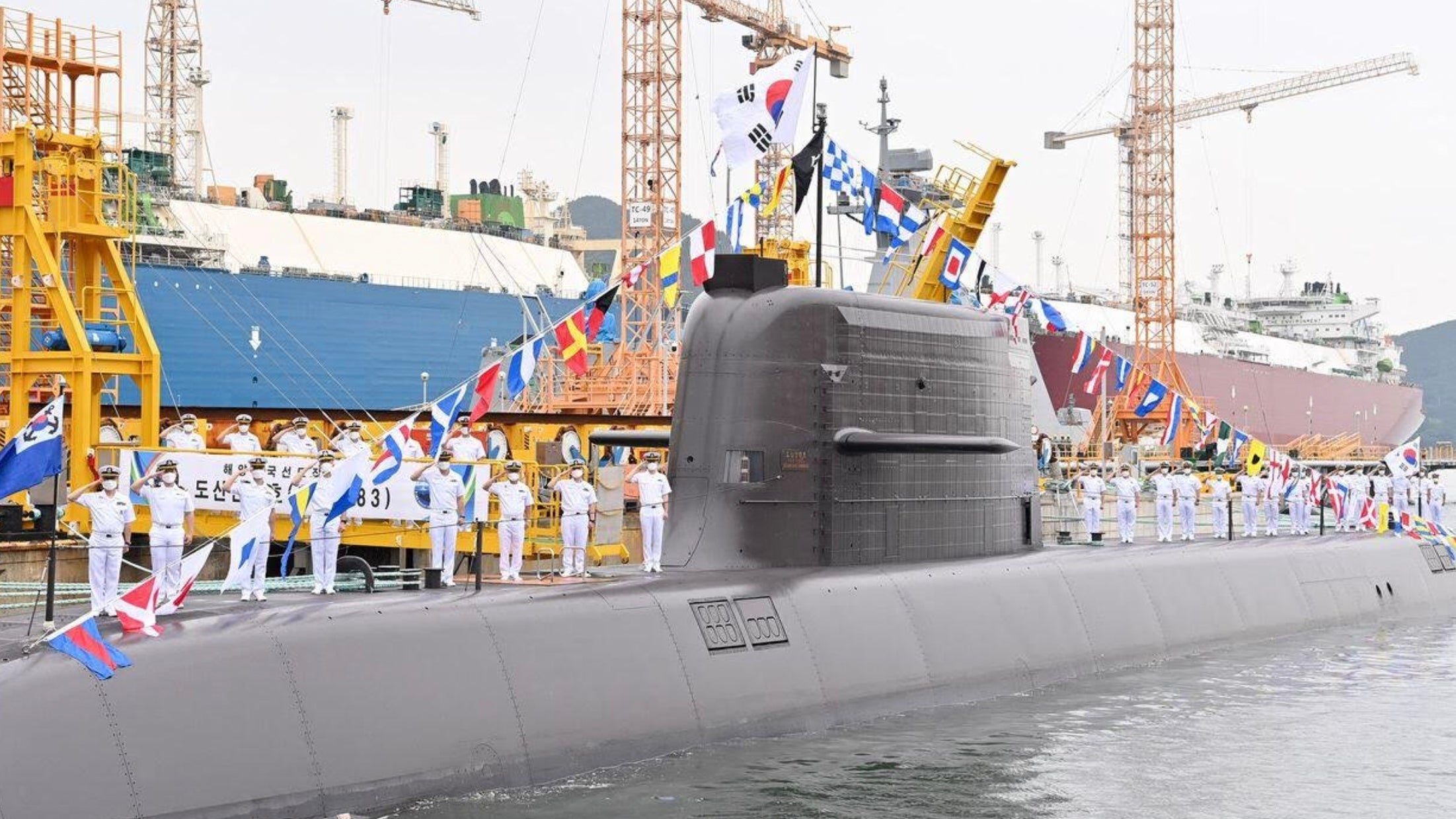South Korea has reportedly conducted successful underwater ejection tests of a ballistic missile from a submarine for the first time. The development and fielding of an indigenous submarine-launched ballistic missile, or SLBM, would place South Korea among a select group of countries with this capability.
The test-firing was first reported today by South Korea’s Yonhap news agency, with the ejection tests being performed from the first of the Republic of Korea Navy’s Dosan Ahn Changho class diesel-electric attack submarines, each of which has a capacity for six SLBM tubes, although these can also be alternatively loaded with cruise missiles. Some reports suggest that two such tests may have taken place, but there is no official word on the trials, in keeping Seoul’s official policy of secrecy on these matters. As such, there is no word on where the test campaign took place or details about its full scope.

The boat in question, however, was the lead ship of this new class, which was commissioned last month. The Dosan Ahn Changho class is significantly larger than previous South Korean submarines, at around 3,800 tons submerged, and is equipped with a fuel cell-based air-independent propulsion system.

The ejection of the SLBM from the submarine follows similar tests using a submerged barge, which The War Zone reported on in July. It’s unclear whether the missile ejected from the submarine completed a full launch cycle, including engine ignition, followed by missile flight, although reports so far only confirm its underwater ejection from the submarine.
An earlier launch of an SLBM from a ground test facility also took place at the Anheung test facility late last year.
This sequence is also reported by Naval News, citing “an informed source from the defense industry,” who said last week’s test was used, in particular, to demonstrate the reliability of the ‘cold launch’ ejection method, which pops the missile out of its vertical launch tube using compressed air, prior to ignition of the solid-fuel rocket engine.
Test-firing of Trident II SLBMs by the USS West Virginia, showing the ‘cold launch’ method:

According to Naval News, a third test scheduled for mid-September will complete the development of the new SLBM. This test will confirm the accuracy of the missile, after a ballistic flight over the Anheung test facility, and should pave the way for full-scale missile production and deployment.
However, neither the South Korean Ministry of Defense nor the country’s Agency for Defense Development, which is responsible for its defense industry, have so far provided further details of the latest test. However, Yonhap describes the SLBM as the Hyunmoo 4-4, which is sometimes called the K-SLBM, and which was reportedly also involved in the previous test from the submerged barge. The news agency attributes the missile with a range of 311 miles (500km) and suggests it’s a naval variant of the Hyunmoo 2B ballistic missile.

Since the previous SLBM test involving a submerged barge, the South Korean Ministry of Defense has also revealed more details of its plans for missile development, broadly. Its recently published defense budget proposal for 2022-2026 calls for weapons “with significantly enhanced destructive power” as part of its response to North Korea’s expanding missile capabilities, although it does not make specific mention of SLBMs. Nevertheless, these weapons are being developed against the backdrop of North Korea’s expanding missile arsenal which presents particular risks to ground-based missiles in South Korea. A submarine-launched weapon presents an inherently more survivable option.
As well as the SLBM program, South Korea’s renewed focus on ballistic missile development includes land-based weapons, too. Also disclosed in the recent budget proposal was a new ballistic missile capable of carrying a warhead weighing up to three tons, compared to the two tons for the Hyunmoo 4 short-range ballistic missile (SRBM), and with a range of between 220 and 250 miles (350 and 400km). According to reports, this new missile would be tailored to destroy hardened underground sites, including North Korea’s nuclear storage facilities.

In all, the budget proposal calls for around $1.3 billion for defense technology research and development over the next year, an increase of 76 percent.
These missile projects have been enabled by Seoul having stepped away from the series of restrictions on missile range that had been in place since 1979, under a bilateral agreement with the United States. Most recently, these put a range cap of 500 miles on South Korean missiles. After U.S. President Joe Biden and South Korean President Moon Jae-in agreed to scrap these limits, South Korea is now able to develop ballistic missiles capable of reaching targets far beyond the Korean Peninsula.

If the development of this first-generation South Korean SLBM proceeds successfully, it could be the stepping stone to an altogether more robust conventionally armed ballistic missile deterrent. While the first of the Dosan Ahn Changho class boats are expected to be able to carry six SLBMs, or alternatively cruise missiles, subsequent vessels are expected to have 10 vertical launch silos. There has also been talk of a potential follow-on nuclear-powered submarine design. Ultimately, the removal of the missile restrictions would allow Seoul to field SLBMs with a range greater than 500 miles, too.
While developments in North Korea remain the primary concern for South Korea’s policy-makers and war planners, such a capability would also offer deterrence against threats further afield, including China and Russia.
Already, South Korea possesses submarine-launched cruise missiles that can attack targets across North Korea, although it could be that the unique attributes of an SLBM are seen as justification for this complex and expensive development effort. Conventionally armed SLBMs would offer South Korea something like a quasi-second-strike capability to help to deter aggression from the north, although such a capability cannot be compared with a true nuclear second-strike capability, in terms of strategic impacts and overall deterrent value. Furthermore, the speed of response and kinetic energy offered by an SLBM could provide an ideal way of attacking a hardened target at short notice, for example decapitating regime command bunkers in the opening phase of a conflict.
In general, land-based ballistic missiles already constitute a critical part of South Korea’s response to an attack from the North, and SLBMs would add an additional degree of survivability. Meanwhile, these weapons, regardless of where they are launched from are also much harder to defend against and can carry larger warheads. With that in mind, expanding these types of options would be in keeping with the Republic of Korea’s broader ballistic missile developments.
Furthermore, as The War Zone has examined in the past, there remains a possibility that Seoul may eventually seek to add nuclear warheads to its burgeoning ballistic missile force, for which the highly survivable SLBMs would be a prime candidate.

While the potential for South Korean authorities to pursue this course of action seems remote, at present, it would provide a direct counter to North Korean nuclear capabilities, including SLBMs, although Pyongyang’s efforts to field these onboard operational submarines have so far achieved only limited success. Nuclear-armed South Korean SLBMs would also potentially free the country from its reliance on the United States when it comes to nuclear deterrence and would be a hedge against political winds shifting and the U.S. taking a less direct role in the defense of South Korea.
Whatever the long-term plan for South Korea’s still-mysterious SLBMs, the program is making progress and this type of weapon, in particular, would seem to tally with the country’s ambitions to field ever more destructive missiles to help ward off the enduring threat from the North.
Contact the author: thomas@thedrive.com
